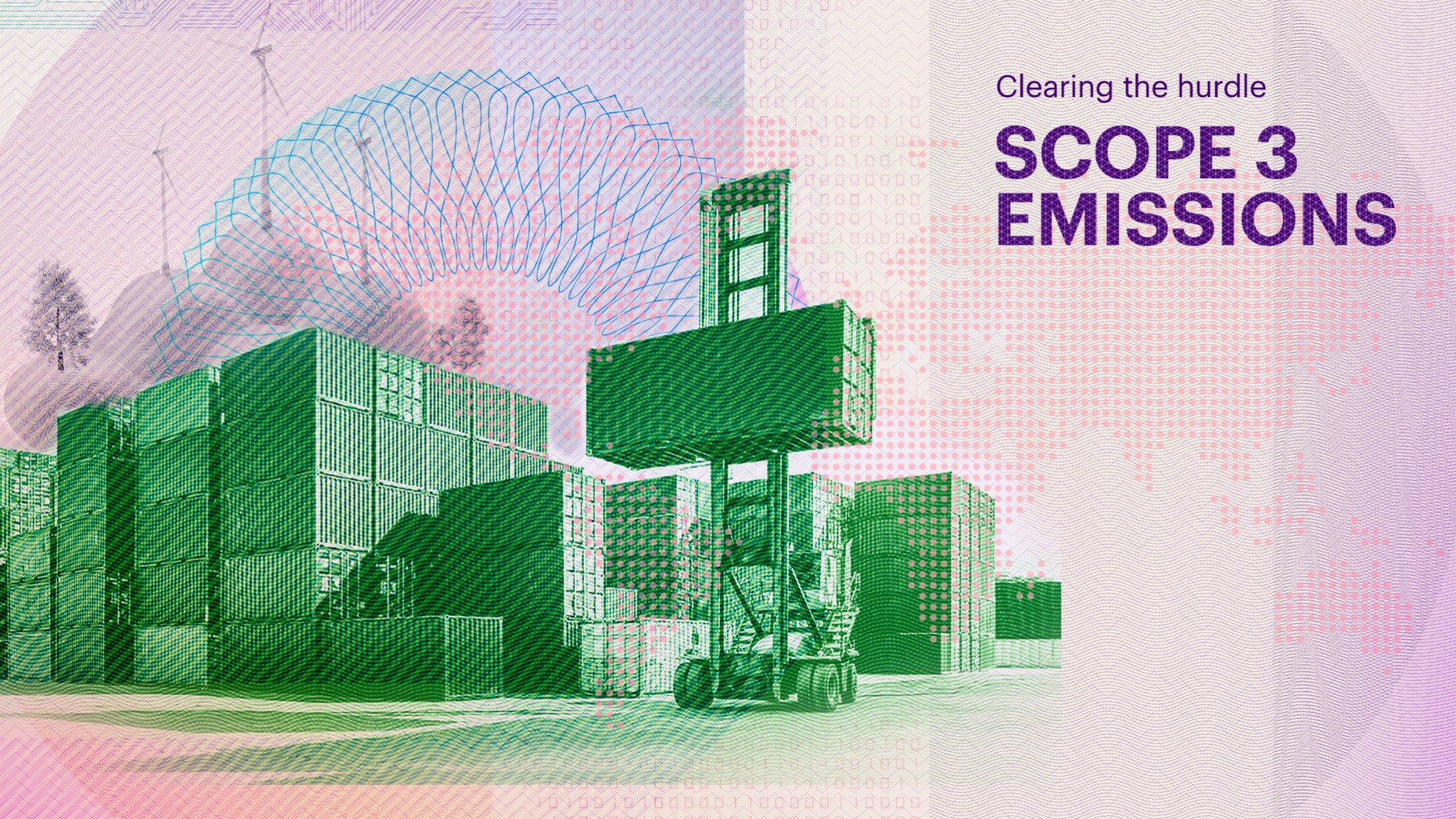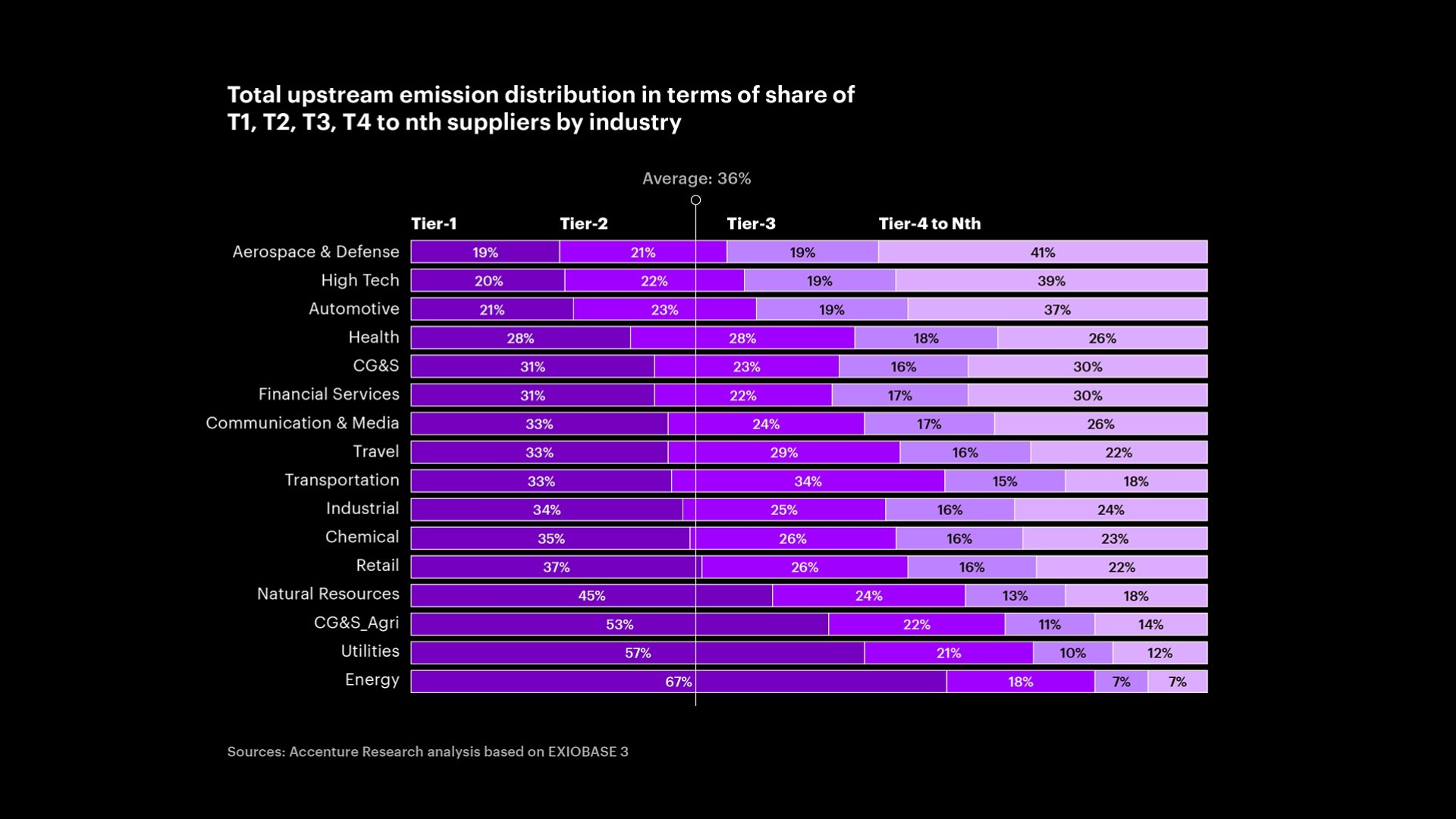BLOG
Clearing the hurdle: Scope 3 emissions
5-MINUTE READ
October 4, 2023
BLOG
5-MINUTE READ
October 4, 2023
Efforts to make sustainability second nature within an organization tend to start internally through things like product and packaging redesign, renewable energy usage, or waste reduction. Yet, it’s when business leaders turn their gaze outward that one of their toughest sustainability hurdles emerges: reducing carbon emissions across their supply chain, the so-called “Scope 3” emissions.
It's what one global pharmaceutical manufacturer grappled with when it tried to capture the emissions impact of their extended supply chain. The company had already established itself as a sustainability leader in a variety of areas such as implementing sustainable product design principles, investing in site renovation projects, sourcing energy from renewable sources, investing in low-carbon equipment, and optimizing production processes to improve efficiency and reduce waste. These achievements were underpinned by an ambitious sustainability strategy, an enterprise-wide program, and ongoing talent development and education. The company also managed to calculate its Scope 1 and 2 emissions (those from its own assets and operations) with a few hiccups.
But when it came to measuring Scope 3 emissions, the complex structure of the company's supply chain eventually brought any progress to a grinding halt. To start with, there were more than 20,000 direct Tier 1 suppliers, spanning more than 50 cost categories and located in scores of countries across the world. Those suppliers, in turn, each had hundreds if not thousands of their own Tier 2 suppliers. Meanwhile, these Tier 2 suppliers had Tier 3 suppliers of their own, and so on. As the company moved further up its supply chain, it became increasingly difficult to identify “hot spots” (suppliers with the greatest emissions), and to directly drive emission reductions.


These struggles are common and hinder the ability of companies and society alike to fight climate change. Supply chains collectively generate about 60% of global emissions. And research by Accenture, found that Tier 1 suppliers are responsible for only 36% percent of upstream emissions, on average. For industries like aerospace and defense, high-tech, and automotive, that percentage is even smaller. (Refer to the chart for further details.)


Distribution of upstream emissions by supplier tier
Without far greater visibility into their supply chains, businesses will continue to spend time and money on activities that are unlikely to have a significant effect on reducing their Scope 3 emissions. Enhancing the transparency and sustainability of their supply chains offers numerous benefits, not just in terms of reducing emissions. In fact, the advantages of increased visibility are almost as diverse as supply chains themselves.
As consumers and employees are becoming more conscious of their carbon footprint, businesses with transparent and sustainable supply chains are presented with the opportunity to access new customer segments and markets, as well as enhance talent acquisition and retention. Moreover, supply chain transparency and sustainability are essential for Total Enterprise Reinvention, with the potential to reduce costs, enhance resilience, comply with regulations, and lower overall business risk.
For example, an aerospace and defense firm implemented an ESG supplier-engagement program to accelerate decarbonization and protect against labor exploitation and product safety. To do so, the firm assembled teams of supply chain specialists to run three initiatives for its 300 suppliers: setting expectations via a Code of Conduct, regular sustainability assessments and reporting, and full data transparency on sourcing practices for minerals and materials. The upshot? The company is now on track to achieve full supplier compliance with its Code of Conduct by 2025.
To obtain high levels of supply chain visibility for maximum sustainability impact, companies should prioritize the following actions in the short-, medium-, and long-term.
Table-stake, short-term actions
Mature the core for mid-term impact
Shape the value chain for sustained impact (within 5 years)
As for the pharmaceutical manufacturer struggling to measure its Scope 3 emissions, the company turned to a solution that leveraged its own Tier 1 supplier-purchasing data to create a sophisticated industry/country-level model of its end-to-end supply chain.
Once Tier 2 and 3 supplier hot spots were identified, the model connected them back to Tier 1 suppliers. Equipped with critical information, the manufacturer could finally launch informed discussions with suppliers on the specific actions needed to reduce emissions.
The broader lesson? By combining greater visibility with collaborative action, organizations of all stripes can embed sustainability, raise their performance, and increase value across their supply chains.
This blog is part of a series discussing how leaders can embed sustainability into different aspects of their organizations to create value and impact. The other topics are: